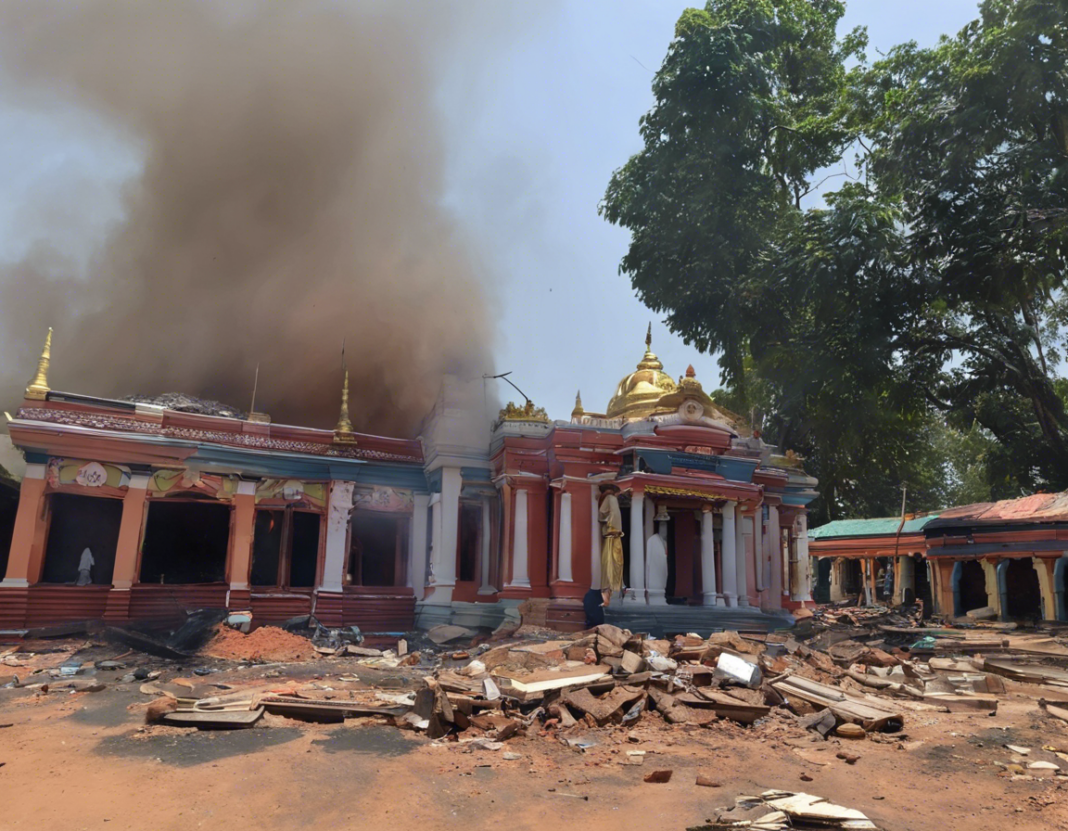The recent tragic incident at the Puthiyakavu Temple has left the community in shock and mourning. The temple, a revered place of worship and cultural significance, was rocked by a devastating blast that has caused immense damage and loss of life. As the community grapples with the aftermath of this tragedy, it is essential to understand the events leading up to the incident and reflect on ways to prevent such occurrences in the future.
The Incident:
On [date of incident], a powerful explosion occurred at the Puthiyakavu Temple, resulting in widespread destruction and multiple casualties. The blast, which is believed to have been caused by [cause of explosion], has sent shockwaves through the community and raised questions about the safety and security protocols in place at religious institutions.
Impact on the Community:
The tragic incident at the Puthiyakavu Temple has had far-reaching effects on the community. Families have been torn apart, lives have been lost, and the emotional toll is immeasurable. In addition to the human cost, the physical damage to the temple and its surroundings is extensive, requiring significant efforts in reconstruction and recovery.
Response and Support:
In the wake of the tragedy, the local authorities, emergency services, and community members have come together to provide support and assistance to those affected. Rescue and relief operations are underway, and efforts are being made to ensure that the victims and their families receive the care and resources they need during this difficult time.
Preventing Future Tragedies:
As the community mourns the loss and works towards healing, it is crucial to address the root causes of the incident and take steps to prevent similar tragedies in the future. This includes conducting thorough investigations, reviewing safety protocols, and implementing measures to enhance security and prevent potential threats.
Safety and Security Measures:
To avoid such catastrophic events, it is essential for religious institutions and public places to prioritize safety and security. This can involve regular inspections and maintenance of facilities, training personnel on emergency procedures, and engaging with law enforcement agencies to address any potential risks or threats.
Community Healing and Unity:
In times of tragedy, communities often come together to support one another and heal as a collective. It is important for the community surrounding the Puthiyakavu Temple to unite in solidarity, offer emotional and practical support to those affected, and work towards rebuilding and restoring the spirit of the temple and its significance in the community.
Remembering the Victims:
As the community mourns the loss of lives in this tragic incident, it is vital to remember and honour the victims. Their memories should serve as a reminder of the importance of vigilance and preparedness in ensuring the safety and well-being of all individuals in places of worship and public gathering.
Conclusion:
The devastating blast at the Puthiyakavu Temple has left an indelible mark on the community, highlighting the fragility of life and the need for proactive measures to prevent such tragedies. As the community comes to terms with the loss and works towards recovery, it is crucial to prioritize safety, security, and unity in honouring the memories of those impacted by this tragic event.
Frequently Asked Questions (FAQs):
1. What caused the explosion at the Puthiyakavu Temple?
The exact cause of the explosion is still under investigation, with authorities looking into potential factors such as gas leaks, electrical faults, or deliberate sabotage.
2. How can communities prepare for and prevent such tragedies in the future?
Communities can enhance their preparedness by conducting regular safety drills, implementing robust security measures, and fostering a culture of vigilance and reporting suspicious activities.
3. What support is available for the victims and their families following the tragic incident?
Local authorities, non-profit organizations, and community groups are offering support in the form of counselling services, financial assistance, and resources for rebuilding and recovery.
4. How can individuals contribute to the relief efforts for those affected by the blast?
Individuals can contribute by donating to verified relief funds, volunteering their time and skills, or offering support to local organizations involved in the relief and recovery efforts.
5. What steps can religious institutions take to enhance safety and security at their premises?
Religious institutions can invest in security infrastructure, conduct background checks on personnel, establish emergency response protocols, and collaborate with local law enforcement agencies for enhanced security measures.
6. How can community resilience be strengthened in the face of such tragedies?
Community resilience can be strengthened through fostering strong social ties, promoting open communication, engaging in regular preparedness drills, and providing support services for those in need.
7. Are there any warning signs or red flags that communities should be vigilant about to prevent similar incidents?
Communities should be vigilant about suspicious activities, unattended packages, unusual behaviors, and any potential threats or security breaches that could indicate a looming danger.
8. How can individuals cope with the emotional impact of such tragic events?
Individuals can cope with the emotional impact by seeking support from mental health professionals, engaging in self-care practices, connecting with support groups, and expressing their feelings in a healthy manner.
9. What role can media and communication play in raising awareness and promoting safety measures in communities?
Media and communication channels can play a vital role in disseminating information about safety protocols, emergency procedures, and reporting mechanisms to raise awareness and enhance community preparedness.
10. How can lessons learned from the Puthiyakavu Temple tragedy be applied to prevent similar incidents in other places of worship and public gathering spaces?
Lessons learned from the Puthiyakavu Temple tragedy can be applied by conducting thorough risk assessments, implementing preventive measures, enhancing security infrastructure, and fostering a culture of safety and vigilance in all public spaces.
